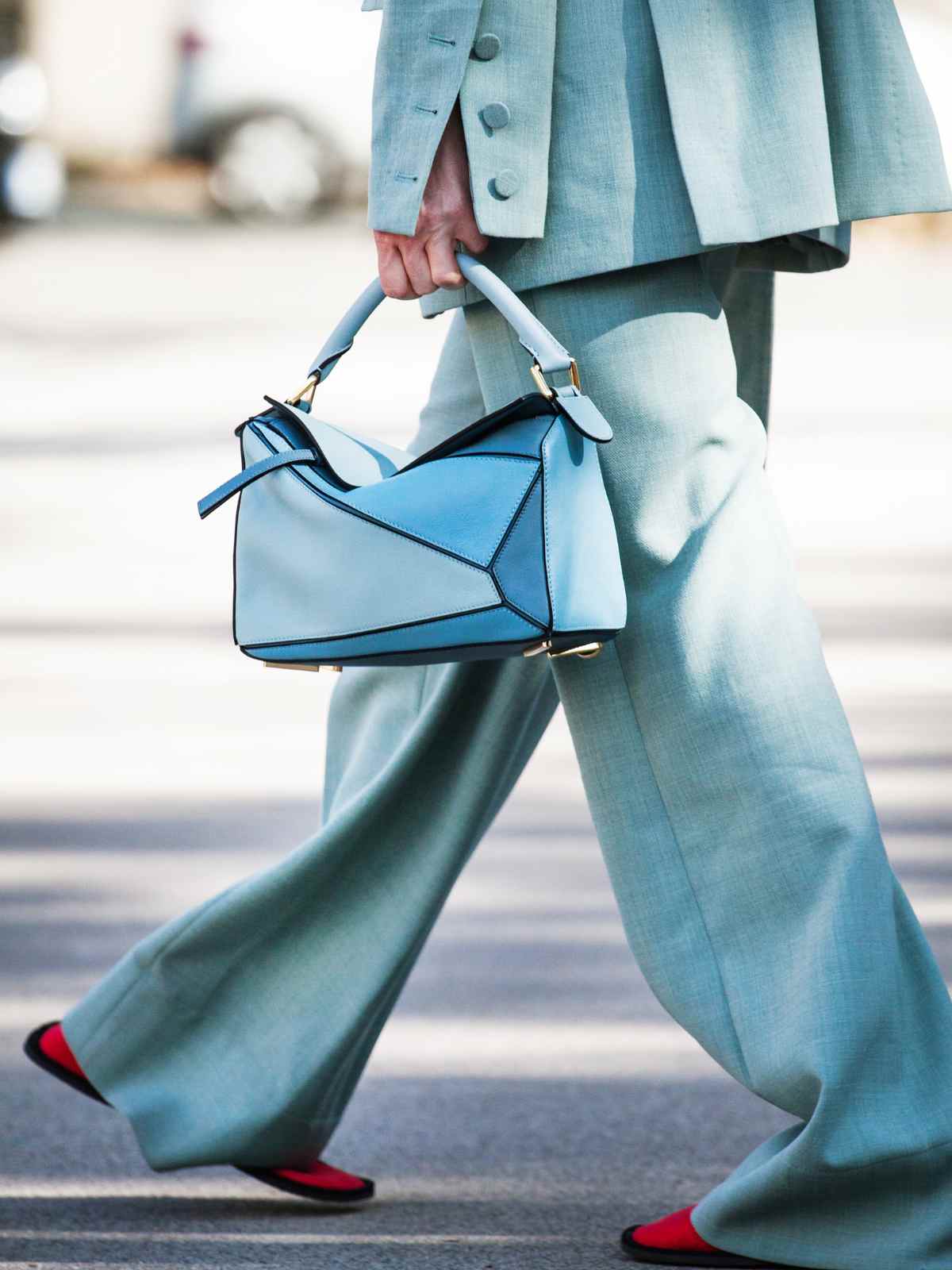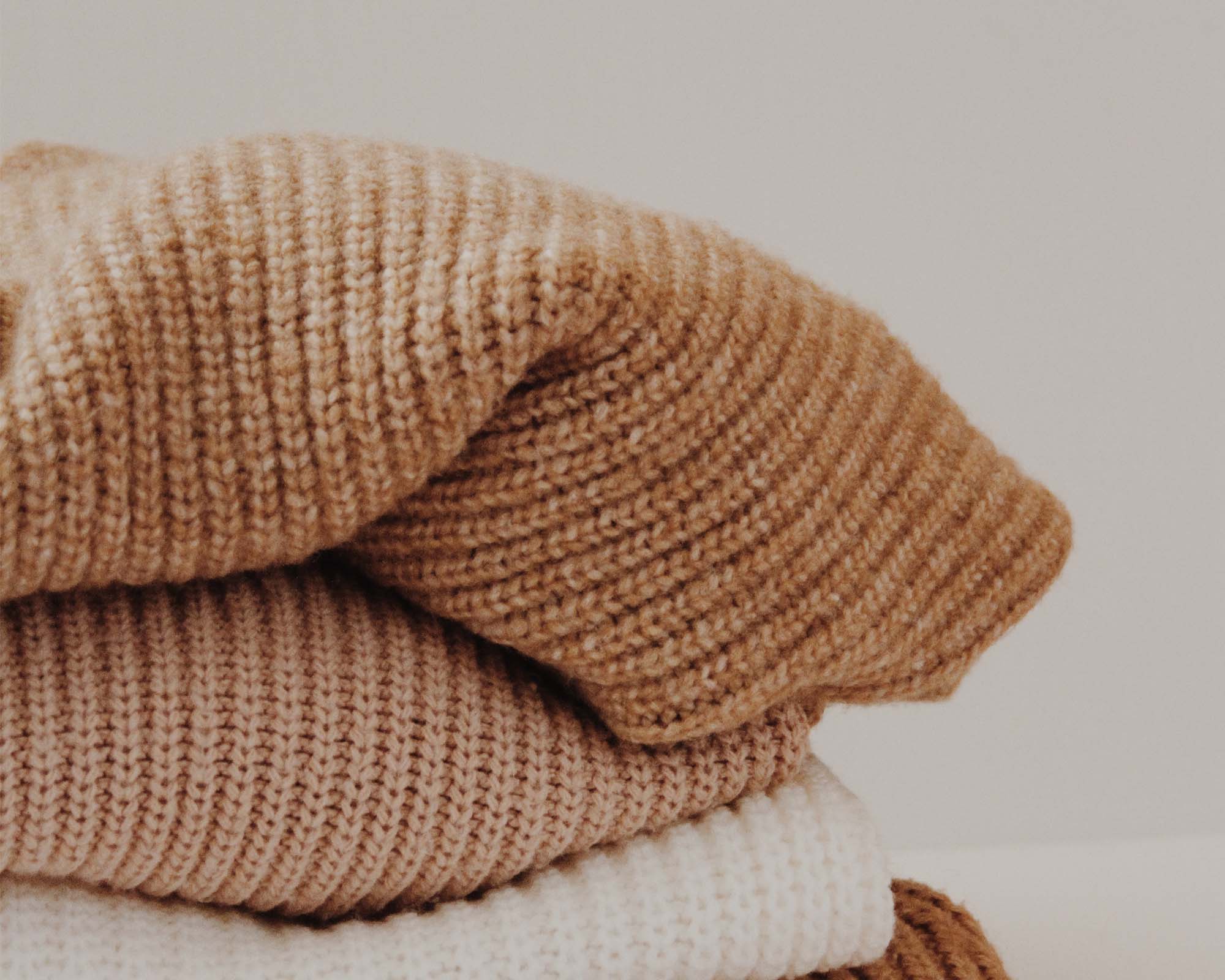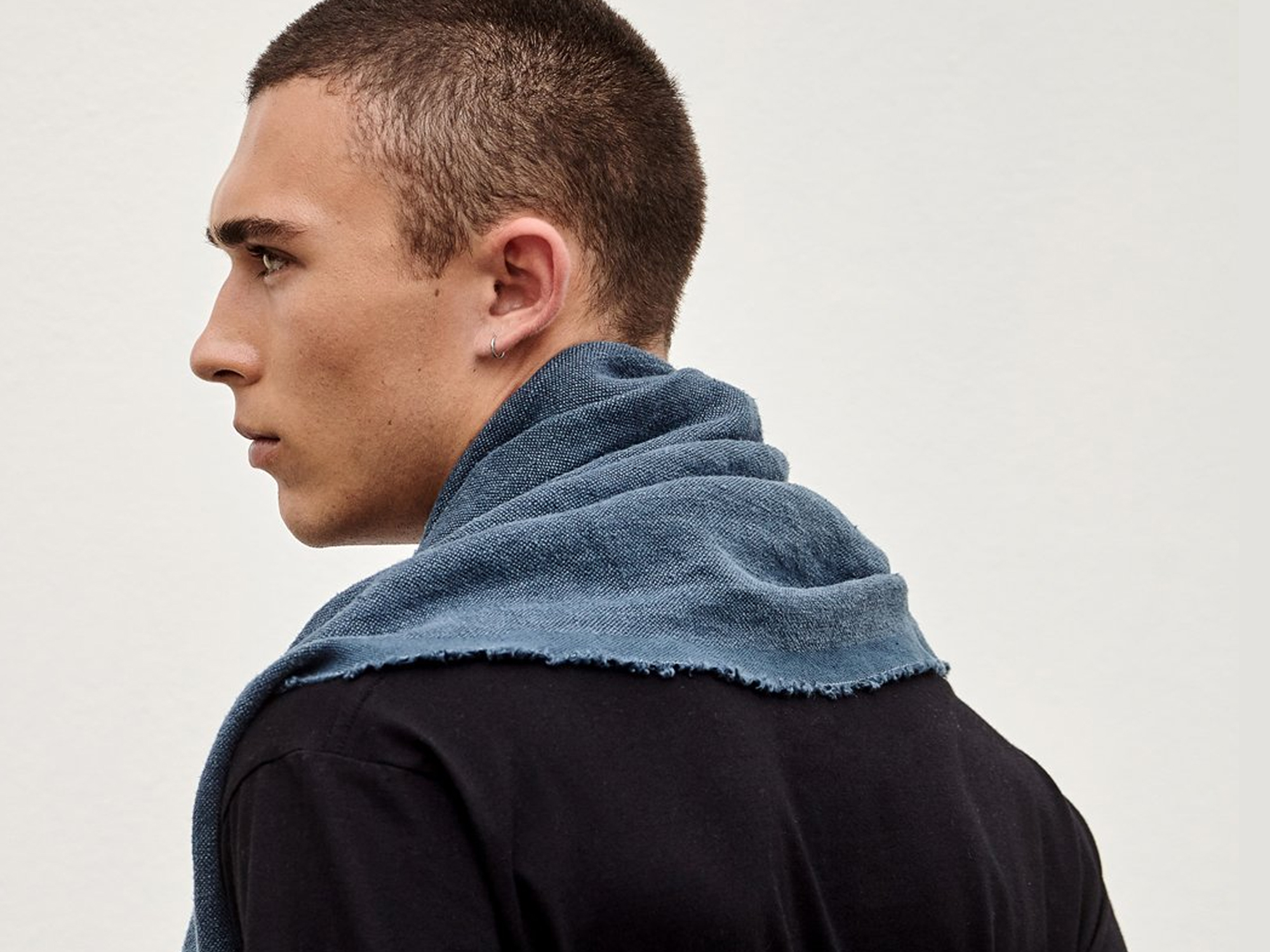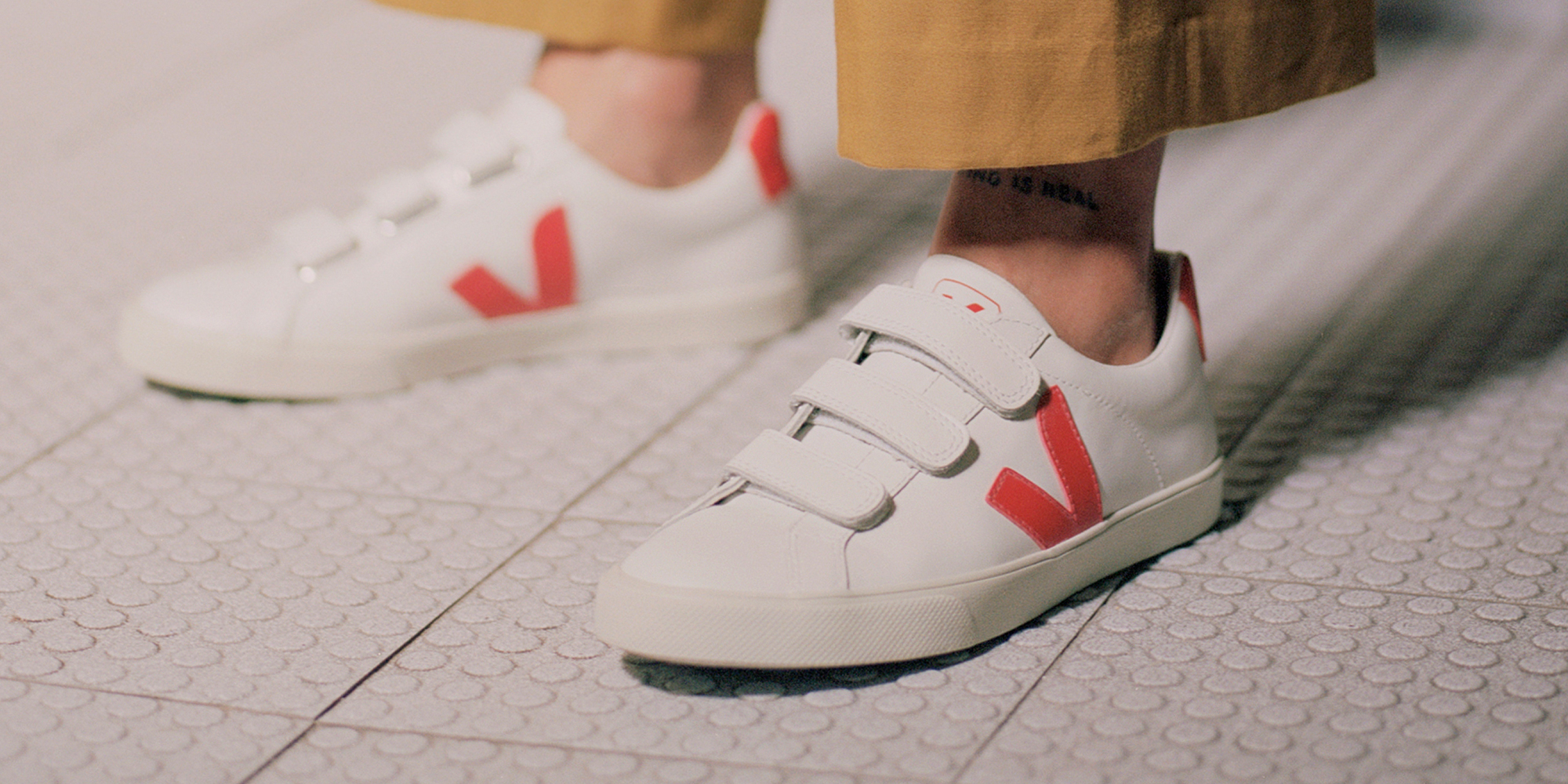Our editors curate highly rated brands that are first assessed by our rigorous ratings system. Buying through our links may earn us a commission—supporting the work we do. Learn more.
Can the use of animal products in fashion harm the environment in the same way that the meat industry does? And if so, what alternatives are out there?
How animal products in clothing are harming the environment
It has become well known in recent years that the choice of whether, or how often, to eat animal products can have a huge impact on our environmental footprint. In fact, a new study revealed by the Guardian showed that “vegan diets resulted in 75% less climate-heating emissions, water pollution and land use than diets in which more than 100g of meat a day was eaten. Vegan diets also cut the destruction of wildlife by 66% and water use by 54%.”
But what about our choices regarding what we wear? With billions of animals used or reared for source materials every year, can the use of animal products in fashion harm the environment like the meat industry does? And if so, what alternatives are out there? Whatever your diet, it’s well worth considering how animal rights in the fashion industry can be linked with broader environmental issues.
The state of animal welfare in fashion
A few months ago, international animal welfare organisation FOUR PAWS launched the third edition of its Animal Welfare in Fashion report, once again using Good On You’s brand rating system, aiming to highlight the progress of animal welfare in fashion over the last two years and identify where industry efforts can be prioritised to maximise impact for animals on the ground, while supporting the industry’s sustainability objectives.
To get a clear view of how the industry is doing for animals, Good On You rated 100 fashion brands from 15 countries across nine market segments, including luxury, sports, and fast fashion.
We found that the fashion industry could be on the cusp of a significant transformation, driven by a growing awareness of its environmental and ethical impact. There were some signs of progress, with 17% of the brands selected in 2023 having improved their overall Good On You rating for their impact on animals since 2021. The report also found that more brands have engaged and made progress in improving animal welfare, especially in the use of certified wool and down, and the adoption of fur-free policies. But, overall, most brands still cause too much harm to animals throughout the supply chain: only 15% of the rated brands achieved Good On You’s top ratings of “Good” or “Great” for animals, and 18% of brands still used wild animal materials (including fur, exotic skins, and decorative feathers).
Wool and cashmere
What could be cosier and more comforting than a woollen sweater? Unfortunately, the facts about wool production’s impacts are not so comforting. Starting with the fact that more than 1.2 billion sheep are farmed for wool worldwide.
One of the main issues with wool, similar to the problem that makes the production of livestock for food so damaging, is the large amount of methane produced by sheep (and cattle in general) being farmed. Methane is a greenhouse gas 84 times more potent than CO2 in the short term. The United Nations says, “livestock are one of the most significant contributors to today’s most serious environmental problems”. “According to one analysis of wool production in Australia, by far the world’s top exporter, the wool required to make one knit sweater is responsible for 27 times more greenhouse gases than a comparable Australian cotton sweater, and requires 247 times more land”, reports Vox.
Nearly 80% of all agricultural land worldwide is used for pasture and arable land to grow feed for farmed animals, including sheep. Grazing occupies 26% of the earth’s ice-free surface. When we clear land for pasture, it results in biodiversity loss, depriving wild animals of their natural habitat and increasing the risk of endangerment and extinction. Additionally, cutting down trees during land clearing releases greenhouse gas emissions. Land degradation and even desertification are some of the additional consequences of intensive sheep farming. In Mongolia for example, the increased demand for cashmere has meant herd sizes have increased, driving the desertification of the grasslands. Though more holistic land management methods for grazing livestock animals are gaining popularity and support, they aren’t yet widely practiced.
This doesn’t mean you must go without your snug winter staples. The first step may just involve being mindful of the wool products that you own by trying to make the items last, and buying second hand wherever possible. If you do want to buy new clothes made out of wool, look for ones made from recycled wool, wool certified by the Responsible Wool Standard, ZQ Merino Standard, or the Soil Association Organic Standards can also be decent options, baring in mind the welfare guarantees for the animals differ. For more info, read our article that looks at the ethics and sustainability of wool.
Leather
While “real” leather jackets, boots, and handbags were once the height of cool, our awareness of the cruelty behind their production can put a dampener on their attraction. Lots of people think leather is sustainable because it’s simply a by-product of the meat and dairy industries—in other words, that leather reduces waste. However, it’s not true that leather is a mere by-product. As well as animal welfare concerns, there are a whole lot more reasons to consider saying no to leather and making the switch to the diverse range of leather alternatives available.
Environmentally, you’d be hard pressed to find a worse offender in terms of pollution of the air, water, soil, and atmosphere. This is because the process of turning animal skin into leather involves the use of many decidedly higher impact chemicals, dyes, and finishes, as well as a large amount of energy and water (some estimates suggest that the creation of a cow skin tote bag might require more than 17,000 litres of water) to power the process. Finally, effluent from tanneries which is a known pollutant of major waterways such as rivers contains washed out chemicals used in the production process including sulphur, nitrogen, and ammonia. Yikes.
Here again, deforestation is a big issue, due to cattle ranching and the need to grow feed for said cattle. The rearing of cattle is the leading driver of habitat destruction in Australia, with similar stories playing out across the globe. For example, it’s said that 10,000 square metres of land in Brazil must be cleared or kept cleared to produce around nine leather jackets. You need just over a metre of leather to make a jacket.
Greenhouse gas emissions are another problem, with Collective Fashion Justice estimating that a pair of cow-hide leather boots, seemingly innocuous shoes, have a climate footprint of 66kg of CO2e, the equivalent of charging 8,417 smartphones.
So, is faux leather the answer? While a great step for animal welfare, simply buying animal-free or “vegan leather” can be somewhat of a lucky dip when it comes to environmental footprint. Unfortunately, some faux leather garments can still cause significant damage to the environment through their production, particularly those made from PVC, AKA glorified plastic.
The good news is that there are plenty of other surprising organic materials used in the production of shoes, jackets and other items traditionally made from leather, such as cork and pineapple leaf fibre, which are far more environmentally friendly than both animal leather and synthetic leather. Because cork can be stripped while the tree continues to grow, this is an extremely sustainable material—and pineapple leaf fibre is literally turning what was once considered trash into treasure! Here is one of our favourite labels that uses these innovative materials to create boots and other products.
For more information on ethical (and enviable) products, a great starting point is our material guide to lower impact leather alternatives that highlights some of the best animal-free fabrics that recreate leather’s famously hardy and durable qualities.
Fur
Fur has the dubious honour of being the first garment that people associate with animal cruelty, with famous protests and campaigns from the throwing of red paint to PETA’s “I’d rather go naked than wear fur” etched into popular culture. What attracts less publicity but is just as worrying is its environmental impact.
The environmental impact of fur in fashion varies depending on the garment and animal used, but in general many of the problems present in the production of wool and leather (toxic chemical runoffs in the after process, and carbon emissions produced in the course of farming the animals) are also an issue with fur. In fact, as we point out in our article all about fur, the climate change impact of 1kg of mink fur is five times higher than that of wool.
What about faux fur? While obviously a massive improvement on real fur for our animal friends, even environmentally the impact is mitigated in some ways, in the sense that animals are not farmed for the material, so related emissions are not directly produced. However, there are still some problems to consider when buying clothing that uses large amounts of this material. One of the major issues is that faux fur is usually made from synthetic fibres that contribute to microfibre pollution, just like some faux leather products—an unfortunate trend that could be attributed to fast fashion hijacking the ethical fashion movement.
And while second hand fur is available, it still perpetuates the idea that it is okay to wear the bodies of our fellow earthlings.
Animal skins and furs can also be a crucial source of income for certain remote indigenous populations, and can greatly contribute to the growth of their communities. Putting indigenous practices under the microscope while ignoring cattle farming in the West is inconsistent at best and likely has roots in racist and colonial thinking.
Down
It’s important to remember that down feathers are commonly used in clothing items, but they’re often tucked way inside our clothes. Unfortunately, the down industry is as cruel as the fur and leather industries and not only does down production cause harm to animals, but it also has a negative impact on the environment.
Although down is biodegradable, it is often used in jackets and coats made of non-biodegradable materials. Even if a puffer jacket is made from recycled polyester, which makes it slightly better than a virgin polyester one, this synthetic material prevents down from properly biodegrading.
Factory farms in which ducks and geese are housed also have a significant impact on the planet, called eutrophication. Eutrophication is a process in which a body of water becomes too rich in particular nutrients, resulting in the dense growth of blue-green algae that can suffocate everything underneath the water’s surface. This eutrophication can result in dead zones where aquatic life cannot survive. Runoff from factory farms like those confining ducks and geese is full of phosphorus-rich faeces, which often results in eutrophication.
Water surrounding slaughterhouses—not just factory farms—is also put at risk by the down industry. When ducks and geese are slaughtered, it often occurs in abattoirs that release massive amounts of wastewater. The organic matter in this wastewater is not only bad for the planet but for surrounding (usually lower-socioeconomic) communities, too. A slaughterhouse killing birds has even been sued for dumping so much wastewater that members of the surrounding human community reportedly faced miscarriages, congenital disabilities, epilepsy, and other illness.
So what are your options? Opt for pre-loved down coats or seek out animal-free alternatives like PrimaLoft P.U.R.E, PrimaLoft Bio, Thermore, or Flowerdown.
Silk
Despite being dubbed a “natural” fibre, silk’s sustainability can vary depending on how it’s processed and how sericulture (the production of silk) facilities are fuelled.
Silk production is an inefficient process as it requires a significant amount of mulberry leaves to be grown to feed silkworms. 187kg of mulberry leaves are required to be grown as feed for silkworms in order to make just 1kg of silk. So many leaves and so much land for them to grow on means that the mulberry leaf farm practices tied to silk matter a lot to the overall material impact.
The processing of conventional silk generates high volumes of greenhouse gases due to the large amounts of manure and fertiliser required to grow mulberry leaves, and because coal is traditionally used to power a lot of the sericulture facilities.
Of course, no material is perfect in terms of its environmental impact. But while there are some unfortunate examples of vegan products causing harmful waste and emissions, the evidence would still seem to show that it is the use of animal products that causes greater damage to the planet. Regardless, it’s a good idea to stay discerning and check the environmental rating of all companies on our directory.
As well as the obvious harm to the welfare of animals that this practice causes, the use of animal products in clothing is equally harmful to the environment in a multitude of ways. However, the availability of garments made from materials that are both cruelty-free and have a lower environmental impact means that we can all play our part in lessening these problems. Fighting global warming while saving the lives of countless animals? That’s a win-win in our book.



















